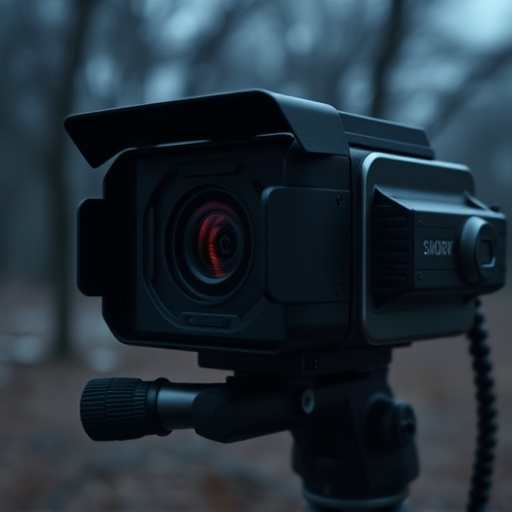Convincing Decoy Cameras for Business exploit common areas like desks, doorways, and break rooms to capture sensitive info or private conversations. Disguised as everyday items, these cameras are hard to detect. Strategically placed, they enhance security without compromising aesthetics. Businesses can fortify perimeters with robust fencing and decoy cameras as visible deterrents, creating safer spaces for operations.
Hidden surveillance devices can be found in unexpected places. This article explores common spots where businesses often install convincing decoy cameras to enhance security. From desks and doorways to break rooms and more subtle locations like behind furniture or in coves, these strategies provide an extra layer of protection. Additionally, we discuss the external perimeter, focusing on gates, fences, and entry points. Discover how to fortify your business environment with innovative yet unassuming surveillance solutions.
- Common Areas: Desks, Doorways, & Break Rooms
- Unobtrusive Spots: Behind Furniture, In Coves
- External Perimeter: Gates, Fences, & Entry Points
Common Areas: Desks, Doorways, & Break Rooms
In any business setting, Desks, Doorways, and Break Rooms are common areas that often harbor hidden surveillance devices. These spots offer convenient locations for covert cameras designed to look like everyday office accessories—a clever tactic employed by malicious actors using Convincing Decoy Cameras. A desk ornament appearing as a USB drive or a stylish paperweight could be hiding a lens aimed at sensitive information or private conversations. Doorways, both entry and exit, may host discreet cameras disguised as light fixtures or security sensors. Break rooms, with their relaxed atmosphere, can be targeted by hidden devices intended to capture confidential discussions or unauthorized activities.
Unobtrusive Spots: Behind Furniture, In Coves
In the hunt for hidden surveillance device locations, one often overlooked yet highly effective tactic involves integrating them into everyday furniture or natural coves within a space. Behind large bookshelves or tucked away in alcoves created by couches and tables can serve as convincing decoy cameras for business settings, offering a subtle presence that is both discreet and powerful. These strategically placed devices blend seamlessly with the environment, making it challenging for individuals to detect their existence—a significant advantage when prioritizing privacy and security.
By utilizing furniture and coves, businesses can enhance their surveillance capabilities while maintaining an aesthetic appeal. Such unobtrusive spots provide a level of subtlety that is increasingly important in today’s digital era, where the use of convincing decoy cameras has become a game-changer for maintaining a safe and secure environment.
External Perimeter: Gates, Fences, & Entry Points
The external perimeter of a business or residential property often serves as a prime location for hidden surveillance devices. Gates and fences, being structural elements designed to protect and control access, can unfortunately also double as convenient hiding spots. Cameras strategically placed near these entry points can deter potential intruders, providing a crucial layer of security.
To enhance this protection, businesses can deploy convincing decoy cameras that mimic the appearance of real security equipment. These decoys, when integrated into the overall surveillance system, send a strong message to would-be criminals. By combining physical barriers like robust fencing and visible camera placements, property owners create an environment that is far less inviting for unauthorized entry, thereby ensuring a safer and more secure space.
In the pursuit of enhancing security and deterring potential threats, businesses can leverage Convincing Decoy Cameras strategically placed in common areas, unobtrusive locations, and along external perimeters. By mimicking real cameras while maintaining a low profile, these decoys offer an effective, yet subtle, deterrent against unauthorized access and surveillance. Implementing such measures not only safeguards valuable assets and sensitive information but also sends a clear message that security is a top priority.
